The Jungle Bugs of Acapulco
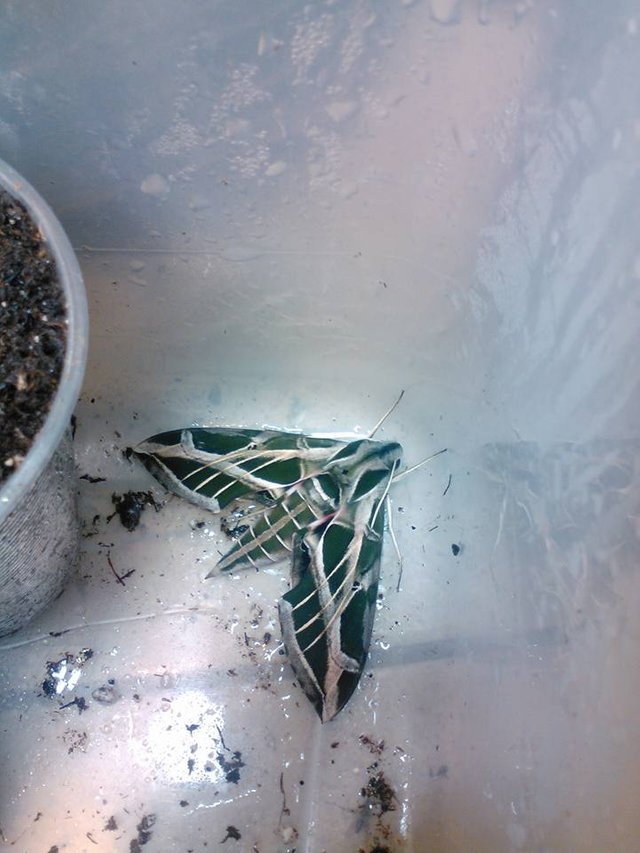
Bugs are everywhere here in Acapulco. I came here expecting to see a difference in bug life and I was not disappointed. I've hesitated writing on about this subject as I honestly don't know much about bugs, in terms of what they are that is. At this point, we have enough pictures of some of the crazy bugs that we've encountered here that it's time to share them. We've shared the sounds of Acapulco, as well as the plants, now it's time for the jungle bugs.
We'll start with everyone's least favorite buggy nuisance, the mosquito. The population varies based on whether you're in the wet or dry season, but mosquitos are here at all times. Some areas you're generally unaffected by them, but there are little pockets where they thrive, regardless of the season. When I moved into my house I didn't notice much in terms of mosquitos, which is saying something considering the front is metal bars and open air. As the rainy season got underway, the mosquitos got worse. At this point, John and I have both had a mosquito borne illness, although we each had a different one. For foreigners and natives alike, mosquito borne illnesses like Zika and Dengu are common. I've been waiting for them to die out as we transition into the dry season here, something that hasn't happened yet sadly.
Ants are my worst enemy here, even worse than mosquitos. You cannot have a messy kitchen unless you want an invasion of ants. They come in all sizes, ranging from little specs to giant red ants. A good many of them bite, especially the smaller black ones. The bites can be just as bad if not worse than mosquito bites. Just standing in the wrong area can get you covered in them, as they run all over your body biting you in an attempt to kill and eat you. At the end of the day, when they bite, they release a neurotoxin with the intent of killing whatever it is that they are attacking, regardless of the size. We've dealt with all sorts of ant invasions, every one of them involving different circumstances. I'll write an article about them honestly, as they are a true force to be reckoned with. They've tried to run off with my plants and I've seen them kill and eat spiders and scorpians.
Fruit flies are everywhere, especially where there is any rotting food or dirty dishes. They are a lot worse during the wet season, there were points where there were just little swarms all over, surrounding anything with an odor, including the dogs. It was both saddening and funny to watch Tequila spend the day biting at the air, trying to kill the gnats that keep landing on her smelly mouth.
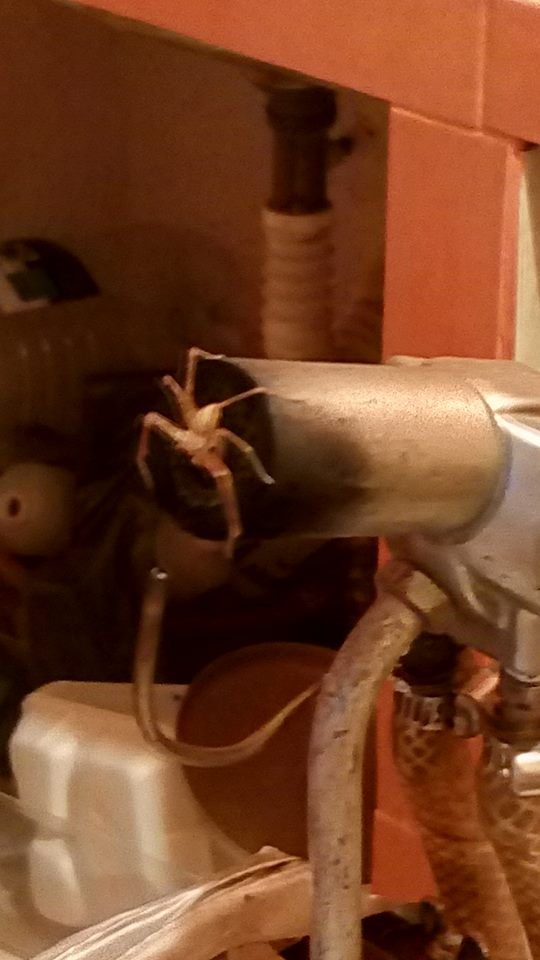
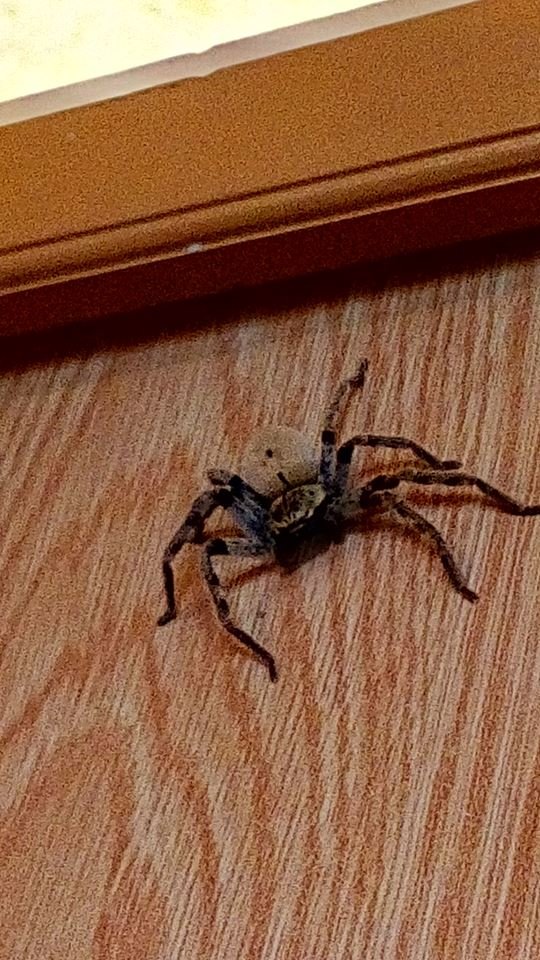
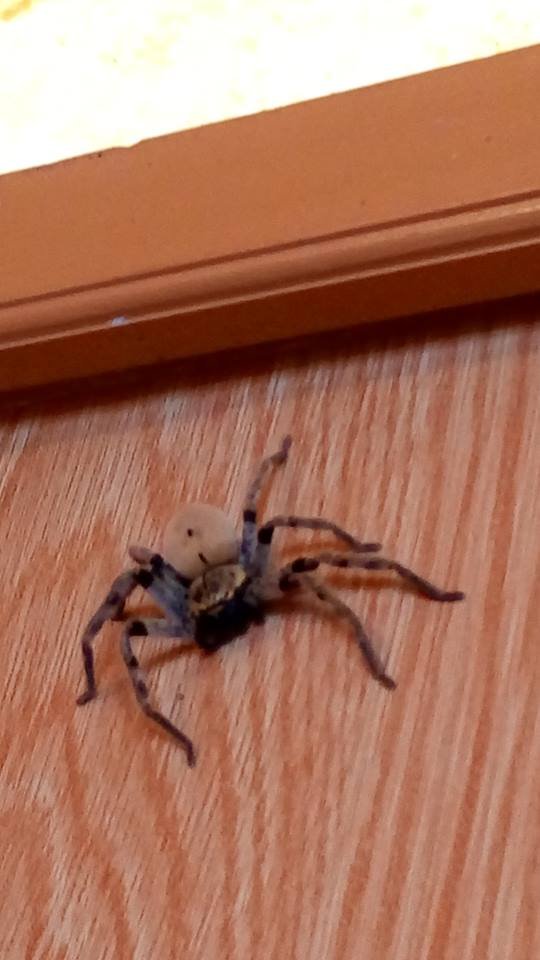
Spiders are a plenty here, if you've got a huge issue with spiders, living here will force you to get over them. I am amazed at the diversity you see in spiders. Some are small, black and white and almost look like they're little robot spiders. Lots of little brown ones and green ones and red ones. They come in all shapes and sizes, including giant. There are a lot more poisonous spiders here than where I come from makes me nervous. I've gotten lots of bites here, several ending in a giant fat lip from swelling.
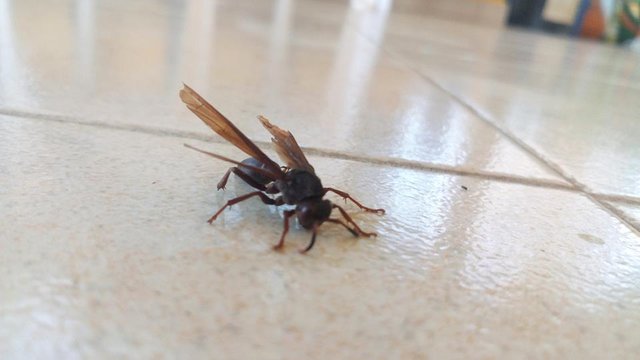
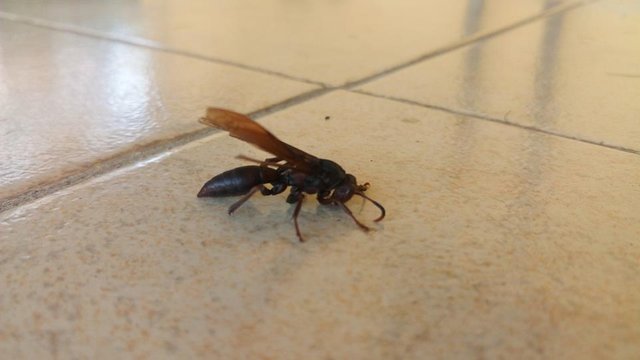
Bees have been interesting here, as I haven't seen very many of the bees I'm used to. There are wasps galore, of all kinds, but honestly I've not encountered many of the bees I'm used to. The picture above is of a wasp variety that frequents my house. I'm always telling my dogs to leave them alone, as they're pretty intimidating. A few days ago I disturbed one of their nests and got swarmed. I got lucky that I only got stung once, honestly. So while the bees are different and there are more wasps than bees, there are plenty of pollinators for my garden here in Acapulco.
Caterpillars and millipedes are common here, as are the butterflies that the caterpillars eventually morph into. Something I've been floored about is the complete absence of worms in the soil here. As a permaculture farmer, worms are my friends. We've tried our best to find some worms for the purpose of having a vermicompost bin, but we haven't found any. The only worm I've ever seen in the soil here was long, thin and had a hard body, probably to defer the attacks of the crazy ants that inhabit much of the soil here.
I love the beetles here, for the most part. They come in all colors and sizes. I've seen white ones with pearlescent hues of green and blue. I've seen gold beetles, red beetles, green beetles. They often have beautiful patterns. For the most part, they are non-aggressive, which is part of why I like them. Every couple of days it seems John is calling me to where he is, to show me yet another amazing beetle.
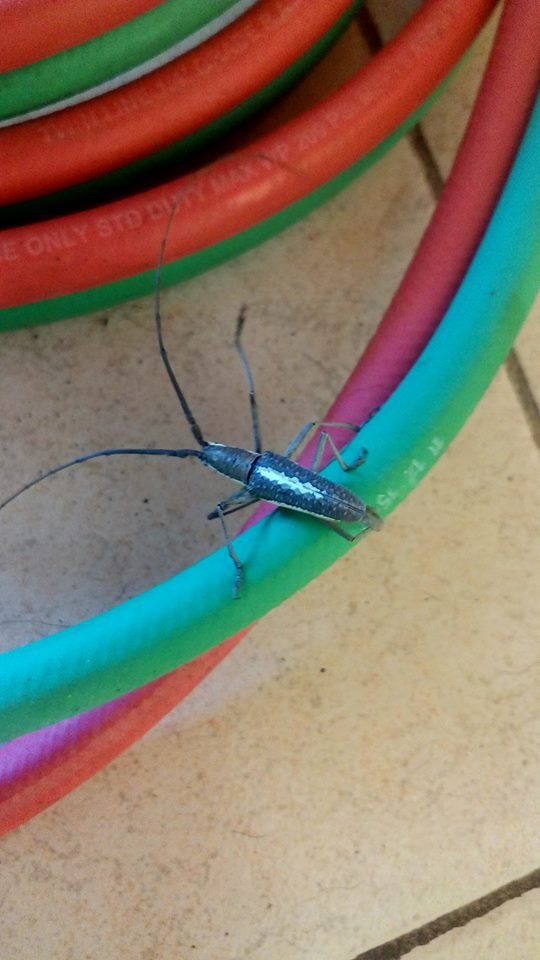
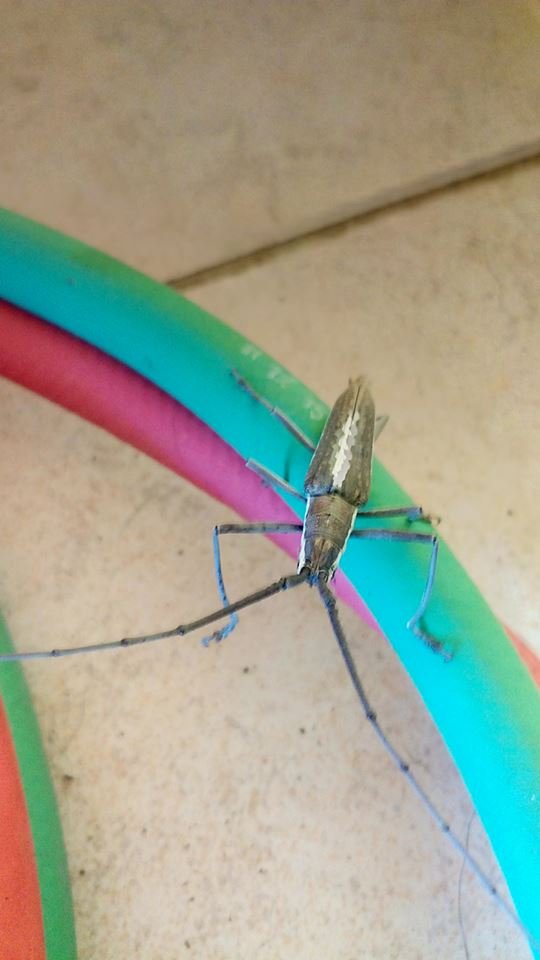
I have a lot more knowledge concerning plants than I do bugs and I was reminded of that when I moved here. There's lots of bugs I've seen here that I don't even know what to call them, the above photos being an example. This is a bug we've seen before here but we saw it again today and managed to get a picture of it. There are so many like this that we encounter on the regular, it makes me want to look into bugs more.
Cockroaches and palmetto bugs are a fact of life here. I've stopped getting grossed out by them, and they honestly aren't a huge problem. At least they don't bite, I'd take them over ants any day for that reason alone.
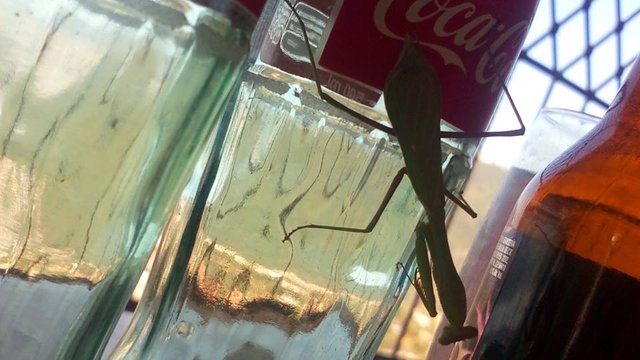
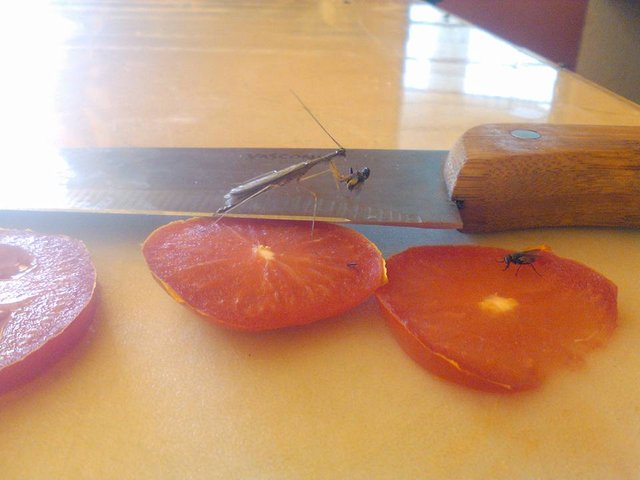
(I forgot that I had this photo, captured just after I watched a tiny mantis catch a fly)
I love the number and diversity of the praying mantis' here. The photo above is of a recent visitor, one I found on a coke bottle when I was cleaning off the dinner table. I almost grabbed him, but noticed there was a bug. This is one of the biggest mantises I've seen here, and you can't tell but he's green. We've seen them in all sorts of colors, most commonly brown and green. We saw one once that was white with a pearly body, which was amazing. The little guy in the photo above got transplanted to our garden, where he got to work eating any predators that may exist there.
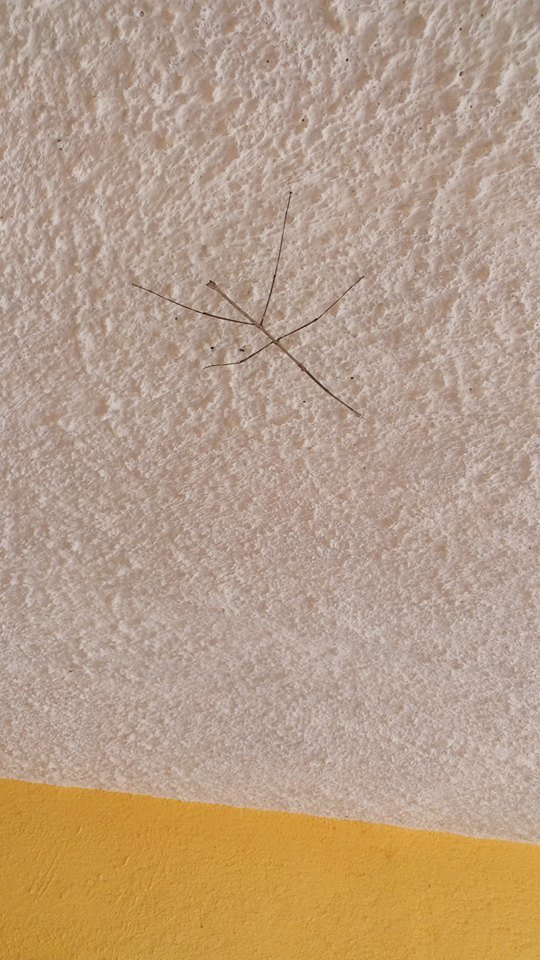
I'd actually never seen one in the states, but there are lots of stick bugs here. Last night John reportedly saw one when he turned on the light in the garden area of the house. The stick bug tried to blend in on the yellow wall as best as he could and we left him to it. These are some of my favorite bugs, as they look pretty awesome.
As we got deep into the wet season here, the spiders got bigger and bigger. The one shown above is a common visitor, albeit scary looking. One night, when investigating a noise I heard outside, I came across a giant black and orange spider, although I didn't realize what it was at the time. I immediately got John to show him the crazy bug I had just found (foolishly telling him he would be fine barefoot), only to realize it was a super giant, super fast spider. I've been freaked out ever since, as that time of year the driveway would get filled with giant webs that I walked into every morning. After that encounter I was convinced that those giant webs could only come from giant spiders. I may be wrong, but it seems to make sense.
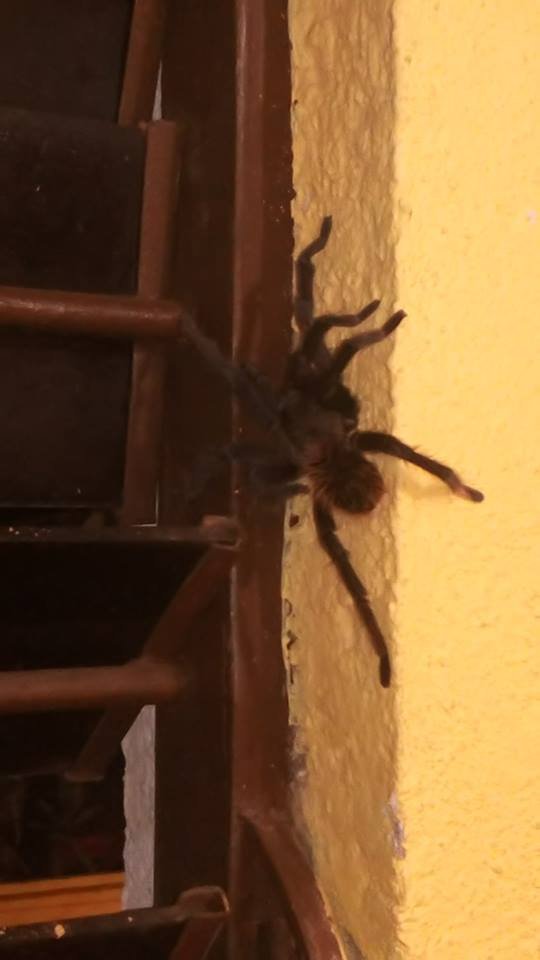
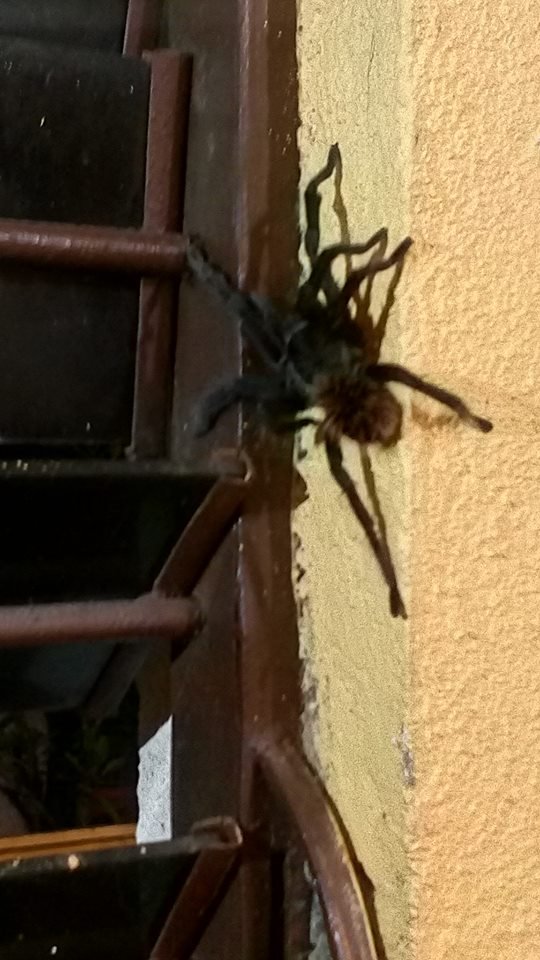
And they got even bigger than that, recently a (possible, it could have just been one) pair of giant wild tarantulas came out of the corner where our bed sat. This was on a night when we had company over, and I happened to be laying down in the bed due to a headache. John noticed the spider and shoed it out, although he didn't kill it. Not long after, another of the same size came from the same area. Considering the fact that the windows were now closed and that tarantulas reportedly travel in pairs, it's likely there actually were two of them. They were so similar in appearance and size that we couldn't tell. John killed the second one, leaving a mark and a blood stain on the wall. That spider is the one photoed above. We haven't seen anymore of those giant spiders, thankfully.
I'm lucky that my barrio is in the middle of the jungle national park, as I get to see a huge number and diversity of butterflies. There are several butterflies we call voluntaryists, because they sport black and yellow. Those ones come small and large, with spots or with stripes. I've seen an incredible diversity here though, which I love. There was a really pretty small brown and red one I saw yesterday. At the right times of the year, my hillside is covered in fluttering butterflies. They range from being tiny to being larger than many of the birds we see here.
Moths are awesome here, and can be just as beautiful as the butterflies. The first photo in this article is of one of my favorites, a common one we see in the house. They are as annoying, flocking to places with lots of light. As a glassblower, this is annoying as they attack you because of the flame. Almost always they meet their death as they fly into the torch flame, somewhat to my relief.
Dragonflies are common, although they don't seem as aggressive as the ones back home. There was a couple month period of time this year where we constantly had several hundred of them, swarming around and through the house. I've got a love for dragonflies, as I have a dragonfly tattoo, so it's a nice sight to see.
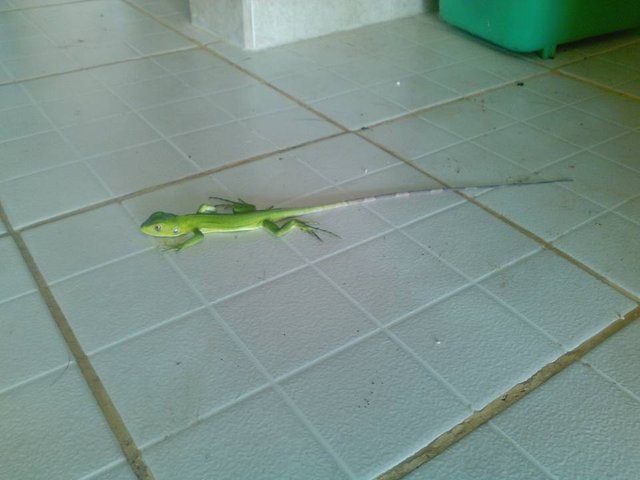
I know the little guy featured above is not a bug, but one of the many lizards here in Acapulco. Lizards are essential, as they spend their time eating moths and mosquitos. I've spent hours watching the nocturnal lizards in our house interact; the amount of bugs they eat in just one night is insane. They're the cutest home invaders ever and make themselves known with their random chattering.
Almost forgotten, but definitely worth mentioning are scorpians. They can be found in your empty shoes, piles of laundry and pretty much anywhere you don't want to encounter them. If you leave your clothes in a pile on the floor, be careful for scorpians as I've had some close calls with them myself. The black one's here are supposedly not poisonous wheras the yellow are. Supposedly the smaller they are, the more venomous they are, which makes sense. This has somewhat been concerned as Tequila got stung playing with one which left her licking the wound for days. Interesting side note, we were in a debate with a friend on how many legs scorpians really have. When I googled the definition, we found that they supposedly have 8 legs. On google images, the actual photos show 6 legs (which is what John and I thought they had), wheras all of the drawn photos depict 8. Conspiracy anyone?
This article doesn't even begin to cover the real extent of the diversity of bugs here, I can think of several I've left out, some of them I'm not even sure how to describe. Many of the creatures mentioned in this article, like ants or lizards, honestly deserve their own article as they're such a huge presence here. The bug life here is not for the faint of heart and there are many products available for exterminating all of these visitors. We do our best to prevent invasions of the bugs we don't like, while encouraging the ones we do, such as praying mantises. I've had to adjust for sure, but it's not hard to coexist peacefully with all these creatures. Some of them are pretty beautiful, making life an interesting adventure.
Good things to know for my trip there in February. Im cool with most insects with exception of mosquitos, spiders, and scorpions! I always check my shoes, got popped by a wasp a few years back and it hurt like hell..lol
You'll do well here, then. I've not had an issue with being stung other than by the one wasp, when I disturbed a nest of them. The scorpians are easy to avoid if you assume that they're lurking everywhere, haha.
As for mosquitos, raidolitos and bug spray will be your friend if you find yourself living somewhere where there are mosquitos.
Here in the Pacific Northwest I don't pull dead flowers or plants from my garden. I let them die back naturally over the winter. This gives many beneficial insects a place to live over the winter and when they hatch in spring, they eat many of the pests that also emerge in spring. This way we do not have to spray any chemicals on the food we grow because nature controls the pests. It's all about balance.
This is a very different climate/eco system than the pacific northwest. The jungle is in constant motion the closest we have to winter here is a dry season that last about 5 months out of the year. If something is clear cut/ or burned here it will be 10 feet tall within 1 year as long as the soil life isn't completly destroyed by intense heat or chemicals. Burning is not appopriate here becuase of the heavy rain falls and steep clay slops; but that does not stop the mexicans who burn on a regular basis. The jungle is like nothing you have exsperianced if you are from a climate that gets snow. Going 1 month without weeding will result in your garden being completely swallowed by the jungle. Our problem is compounded by the frequent burnings the land went through before we took it over.
That's pretty amazing. You have to be adaptable to shift to such different gardening conditions. Here's to your gardening success!
Thanks and hopefully; thing just want to grow here the trick is getting what we want to grow rather than what we don't want.
Bugs are so fascinating. I love how they just look right into the lens and wait for their picture to be taken. Thanks for sharing!
Votado y siguiendo.. Saludos
The scorpion has eight legs.
In the photo, see right under the claws. Especially on the right, you can see its foot sticking out. And on the left you can see its thigh just above the claw/arm.
This post has been ranked within the top 25 most undervalued posts in the first half of Nov 19. We estimate that this post is undervalued by $8.77 as compared to a scenario in which every voter had an equal say.
See the full rankings and details in The Daily Tribune: Nov 19 - Part I. You can also read about some of our methodology, data analysis and technical details in our initial post.
If you are the author and would prefer not to receive these comments, simply reply "Stop" to this comment.